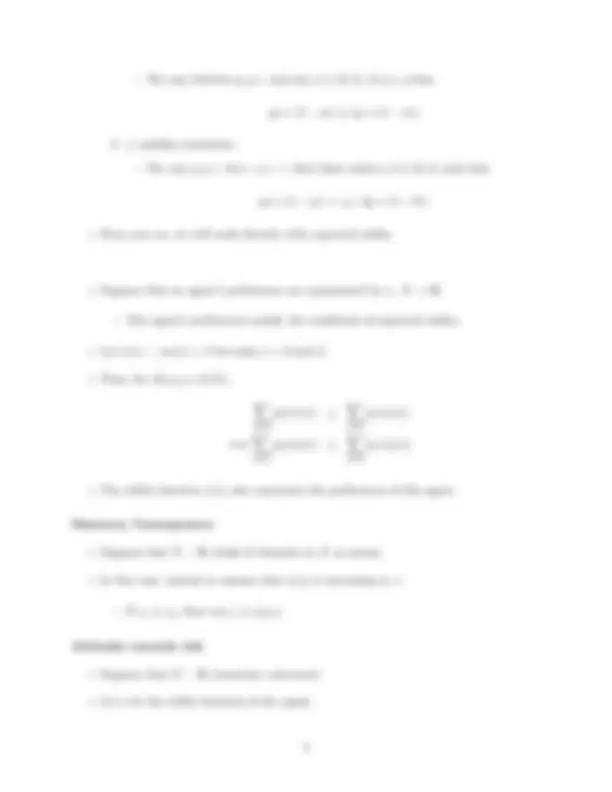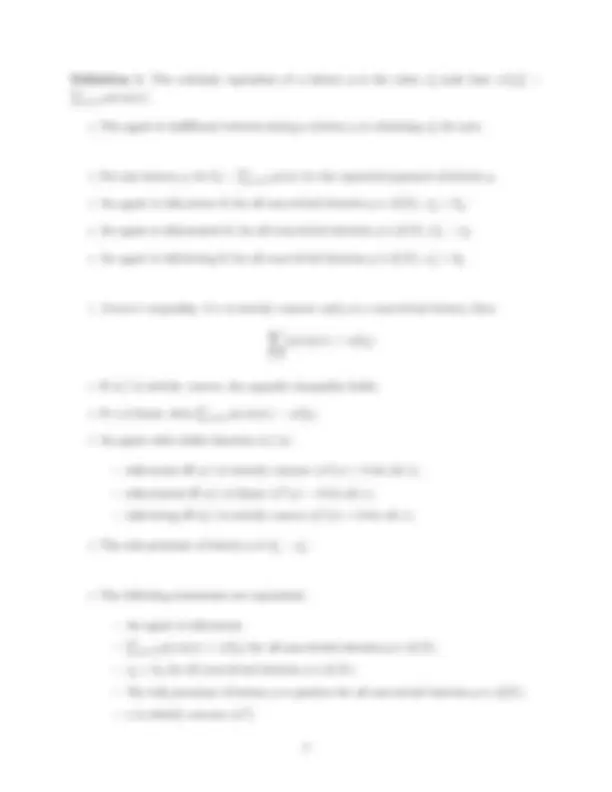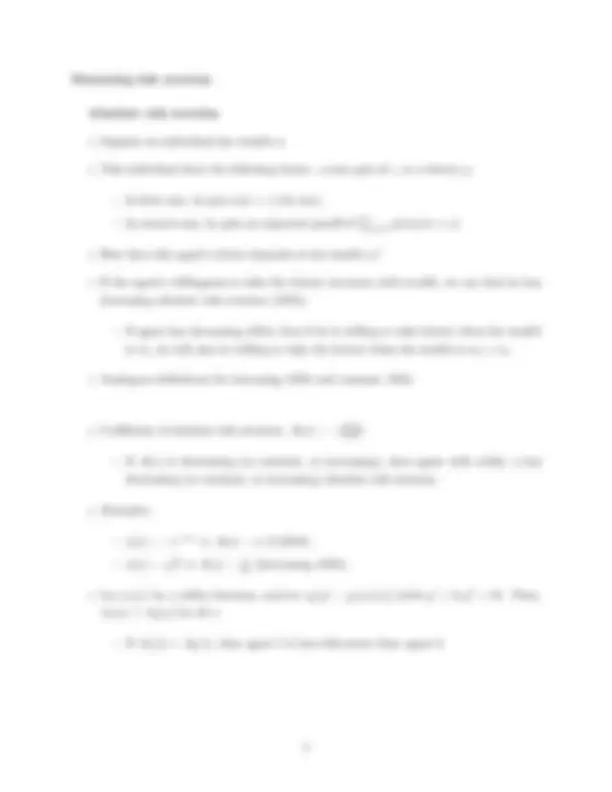





Study with the several resources on Docsity

Earn points by helping other students or get them with a premium plan


Prepare for your exams
Study with the several resources on Docsity

Earn points to download
Earn points by helping other students or get them with a premium plan
Community
Ask the community for help and clear up your study doubts
Discover the best universities in your country according to Docsity users
Free resources
Download our free guides on studying techniques, anxiety management strategies, and thesis advice from Docsity tutors
Coefficient of relative risk aversion: R(x) = xu00(x) u0(x) . – If R(x) is decreasing (or constant, or increasing), then agent with utility u has.
Typology: Study notes
1 / 6

This page cannot be seen from the preview
Don't miss anything!




� Today, we will study settings in which decision makers face uncertain outcomes.
� States of the world (or states of nature):
An Example: Will Greece default on its debt or not?
� Two possible “states of nature”: default (D), or no default (N).
� Agent has two options: invest in cash or in stocks. � If the agent invests in stocks:
� If he invests in cash:
� In which assets should the agent invest?
Preferences over lotteries
� Let X be a set of “prizes”.
� A “lottery” is a function p : X! [0, 1] such that P x 2 X p(x) = 1.
� Example: X = { 1 , 10 , 100 }, p(1) = 0.4, p(10) = 0.2, p(100) = 0.4.
� Let L(X) denote the set of all lotteries on X.
� A lottery p 2 L(X) is non-trivial if it has at least two distinct prizes with positive probability.
Expected utility
� Let ⌫ be a “preference relation” over lotteries in L(X).
� We would like there to be a utility function function u : X! R such that p ⌫ q if and only if (^) X
x 2 X
p(x)u(x) �
x 2 X
q(x)u(x)
� In this case, we can evaluate lotteries by computing their expected payo↵s.
� Under certain conditions such a utility function exists.
Definition 1. The certainty equivalent of a lottery p is the value x cp such that u
x cp
x 2 X p(x)u(x). � The agent is indi↵erent between facing a lottery p or obtaining x cp for sure.
� For any lottery p, let x (^) p =
x 2 X p(x)x^ be the expected payment of lottery^ p. � An agent is risk-averse if, for all non-trivial lotteries p 2 L(X), x cp < x (^) p. � An agent is risk-neutral if, for all non-trivial lotteries p 2 L(X), x (^) p = x cp.
� An agent is risk-loving if, for all non-trivial lotteries p 2 L(X), x cp > x (^) p.
� Jensen’s inequality: if u is strictly concave and p is a non-trivial lottery, then X x 2 X
p(x)u(x) < u(x (^) p )
� If u(·) is strictly convex, the opposite inequality holds. � If u is linear, then
x 2 X p(x)u(x) =^ u(x^ p^ ). � An agent with utility function u(·) is:
� The risk premium of lottery p is x (^) p � x cp.
� The following statements are equivalent:
x 2 X p(x)u(x)^ < u(x^ p^ ) for all non-trivial lotteries^ p^2 L(X).
Measuring risk aversion
Absolute risk aversion
� Suppose an individual has wealth w.
� This individual faces the following choice: a sure gain of z or a lottery p.
x 2 X p(x)u(w^ +^ x). � How does this agent’s choice depends on his wealth w?
� If the agent’s willingness to take the lottery increases with wealth, we say that he has decreasing absolute risk aversion (ARA).
� Analogous definitions for increasing ARA and constant ARA.
� Coe�cient of absolute risk aversion: A(x) = � u u^00 0 (^ (xx)) :
� Examples:
� Let u 1 (x) be a utility function, and let u 2 (x) = g (u 1 (x)) (with g 0 > 0 , g 00 < 0). Then, A 1 (x) < A 2 (x) for all x.